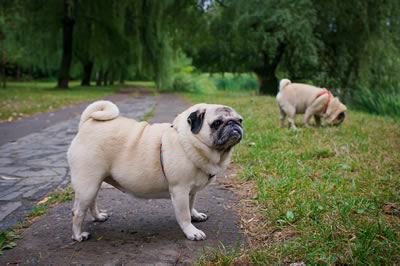Good news, pet owners—the percentage of pets in the United States that are overweight is less than that of adult humans. Wait, maybe that’s not good news.
Not to ruin your Holiday cheer, but over two-thirds of American adults are overweight. Soon, many of us will be setting New Year’s resolutions to lose those extra pounds. Why not do it for your pet as well. Over half of all pet dogs and cats in the US are overweight. Start off the New Year with a commitment to get your pet in great shape, too. Here is some advice on how to make it happen.
The first thing you want to do is weigh your pet and ask your veterinarian how much your pet should weigh. Together, you can design a proper weight-loss regimen. Check out our previous post on pet weight.
Next, make sure your pet is getting the right amount of food. Read your pet food labels and make sure your pet is getting the proper amount each day. We tend to fill the pet food bowl more than we probably should, so measuring each portion is a good idea.
If your pet does need to shed some pounds, consider cutting her current portions by 10-20%. Ask your vet what would be appropriate.
If smaller portions don’t seem to be working, it might be time to switch to diet food. Again, get recommendations from your vet.
Another key ingredient to getting your pet in shape is treats. Eliminating treats altogether might not work for you, but find other ways to reward your pet for good behavior. Many pets value love and attention even more than meaty treats, anyway.
Just like us, your pet will get into better shape with a good dose of exercise. If he is healthy enough for regular exercise, take your dog for a walk every day. Remember to take the precautions listed in our winter weather post to protect him from the elements.
While you have your veterinary hospital on the line for food and weight advice, you might want to make an appointment for a checkup, especially if weight-loss measures are not working. There could be an underlying condition affecting your pet’s weight. A thorough exam, including blood tests, can help determine the cause.
Finally, any healthy weight-loss regimen requires goals and a gradual approach. With your vet’s help, set a goal weight and timeline, take the proper measures, and check your progress on a weekly basis. Now you get to have a diet and exercise buddy to help you with your New Year’s resolutions.

